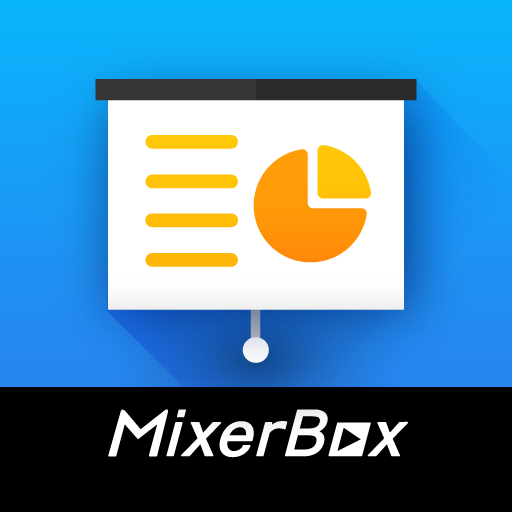Product Hunter (H10)-product analysis tool for Amazon.
AI-powered tool for product evaluation.
Related Tools
Load MoreAssistant Hunter
Search through 27K+ GPTs and find the best AI assistants for you

Product Hunt Launch Assistant
I can help you create your Product Hunt listings fast!

Airdrop Hunter
Specialist in cryptocurrency airdrops, providing info and claiming assistance.
ProductGPT
Bring your ideas to life.

GPTs Hunter
Find the best GPTs. Powered by GPTsHunter.com
Product Manager Helper
Your go-to assistant for product management advice and insights.
20.0 / 5 (200 votes)
Introduction to Product Hunter (H10)
Product Hunter (H10) is a comprehensive product analysis tool designed to identify market opportunities for launching or improving products, particularly on platforms like Amazon. Its core function is to evaluate product viability through detailed data-driven analysis, factoring in elements such as competition, sales potential, and market trends. The tool analyzes key metrics like Best Sellers Rank (BSR), price trends, reviews, monthly revenue, and product age to calculate an 'opportunity score' for each product, helping users focus on the best options for success. For example, if a business wants to identify low-competition products with high revenue potential, Product Hunter (H10) would take into account factors like low review count (indicating lower competition) and high monthly revenue to score the product higher. It is designed to work seamlessly with datasets containing large amounts of product data, making it a valuable tool for businesses aiming to expand their product lines or enter new markets.

Core Functions of Product Hunter (H10)
Product Opportunity Scoring
Example
A seller can input a dataset containing product details (e.g., BSR, price trends, reviews), and Product Hunter (H10) will calculate a score based on weighted criteria such as revenue potential, competition, and market trends.
Scenario
A business selling kitchen appliances wants to launch a new product on Amazon. Using Product Hunter (H10), they upload a dataset of potential kitchen gadgets, and the tool scores each one based on opportunity. Products with high revenue but low competition are ranked highest, guiding the seller's decision.
Market Saturation Analysis
Example
The tool inverts specific metrics, such as review count and review ratings, to highlight products that are less saturated in the market but still have strong revenue potential.
Scenario
A cosmetics company is considering launching a new skincare product. By running a dataset of competitors through Product Hunter (H10), they identify products that have fewer reviews (indicating less saturation) but consistent monthly revenue, suggesting a market gap they can exploit.
Data Normalization and Preprocessing
Example
When dealing with incomplete data, Product Hunter (H10) fills gaps with default values based on calculated thresholds. For example, if reviews data is missing, the tool assigns a default value based on market average ratings.
Scenario
An eCommerce startup is analyzing product trends but lacks full data on customer reviews. Product Hunter (H10) fills in missing review ratings, allowing them to still proceed with a complete opportunity analysis. This helps them identify which products are worth pursuing even without perfect data.
Target Users of Product Hunter (H10)
Amazon Sellers and eCommerce Entrepreneurs
Product Hunter (H10) is ideal for small to medium-sized Amazon sellers and entrepreneurs who need a data-driven approach to identify high-potential products. These users often operate in competitive markets and need to find products that offer a balance of high demand and low competition, which Product Hunter (H10) highlights through its scoring system.
Product Managers and Market Analysts
Product managers in large eCommerce companies or market analysts working in product research benefit from Product Hunter (H10) by using it to assess market gaps and saturation. These users rely on detailed metrics like BSR, review counts, and price trends to inform decisions about new product launches or category expansions, making the tool invaluable for long-term strategic planning.

How to Use Product Hunter (H10)
1
Visit aichatonline.org for a free trial without login, no need for ChatGPT Plus.
2
Prepare your product dataset. Ensure it contains essential columns such as ASIN, BSR, Price Trend, Reviews Rating, Review Count, Monthly Revenue, and Age.
3
Upload the dataset for analysis. Clean and preprocess the data by addressing any missing values, especially for financial and review-related metrics.
4
Adjust the weights of each criterion based on your market strategy. For example, assign higher weight to Review Count if you're targeting less competitive niches.
5
Generate the opportunity score and download a ranked list of products. Use this to inform strategic decisions for product launch or improvement.
Try other advanced and practical GPTs
Story Illustrator
AI-powered tool for creating engaging children's picture books.

StudiYo Partner | House Music Audio & Visuals
Unleash your creative potential with AI-driven insights for house music.
Empathy Map Generator
AI-Powered Insights for Understanding Audiences

Sienna - From Sienna Living
AI-powered content creation made easy.

Comic Craft
AI-powered comic storytelling made easy

A.I. Film Wizard
AI-powered short film creation

Talk Dirty To Me
AI-Powered Flirtation at Your Fingertips

Restaurant Menu Creator
AI-Powered Restaurant Menu Design

Easy Events
Automated event creation, powered by AI.

Lyricaly
AI-powered tool for lyrical insights.

TriEdit
AI-powered writing enhancement

MixerBox ChatGSlide
AI-Powered Assistant for Google Slides Management

- Market Analysis
- Product Launch
- Data Insights
- Competitive Research
- Revenue Forecasting
Product Hunter (H10) Q&A
What does Product Hunter (H10) do?
Product Hunter (H10) is a data analysis tool designed to help businesses evaluate potential products for launch on Amazon. It analyzes product datasets, ranks them by opportunity score, and helps identify the best products for market entry.
How does Product Hunter (H10) calculate the opportunity score?
The opportunity score is based on multiple criteria including Best Sellers Rank (BSR), Price Trend, Review Ratings, Review Count, Monthly Revenue, and Product Age. Each criterion is weighted according to importance, normalized, and combined to produce a score indicating market potential.
What type of datasets does Product Hunter (H10) work with?
Product Hunter (H10) works with datasets containing product data such as ASIN, Best Sellers Rank (BSR), Price Trend, Reviews Rating, Review Count, Monthly Revenue, and Age in months. This data helps determine product viability for Amazon launches.
How can Product Hunter (H10) help reduce competition?
By analyzing factors like Review Count and Reviews Rating, Product Hunter (H10) identifies products with fewer reviews and lower ratings, signaling less competitive spaces in the market. This allows you to target opportunities with less saturation.
Can I adjust the criteria for product analysis?
Yes, you can customize the weights for different criteria based on your strategy. For example, if your focus is on emerging products, you can give more weight to newer products with higher revenue potential.